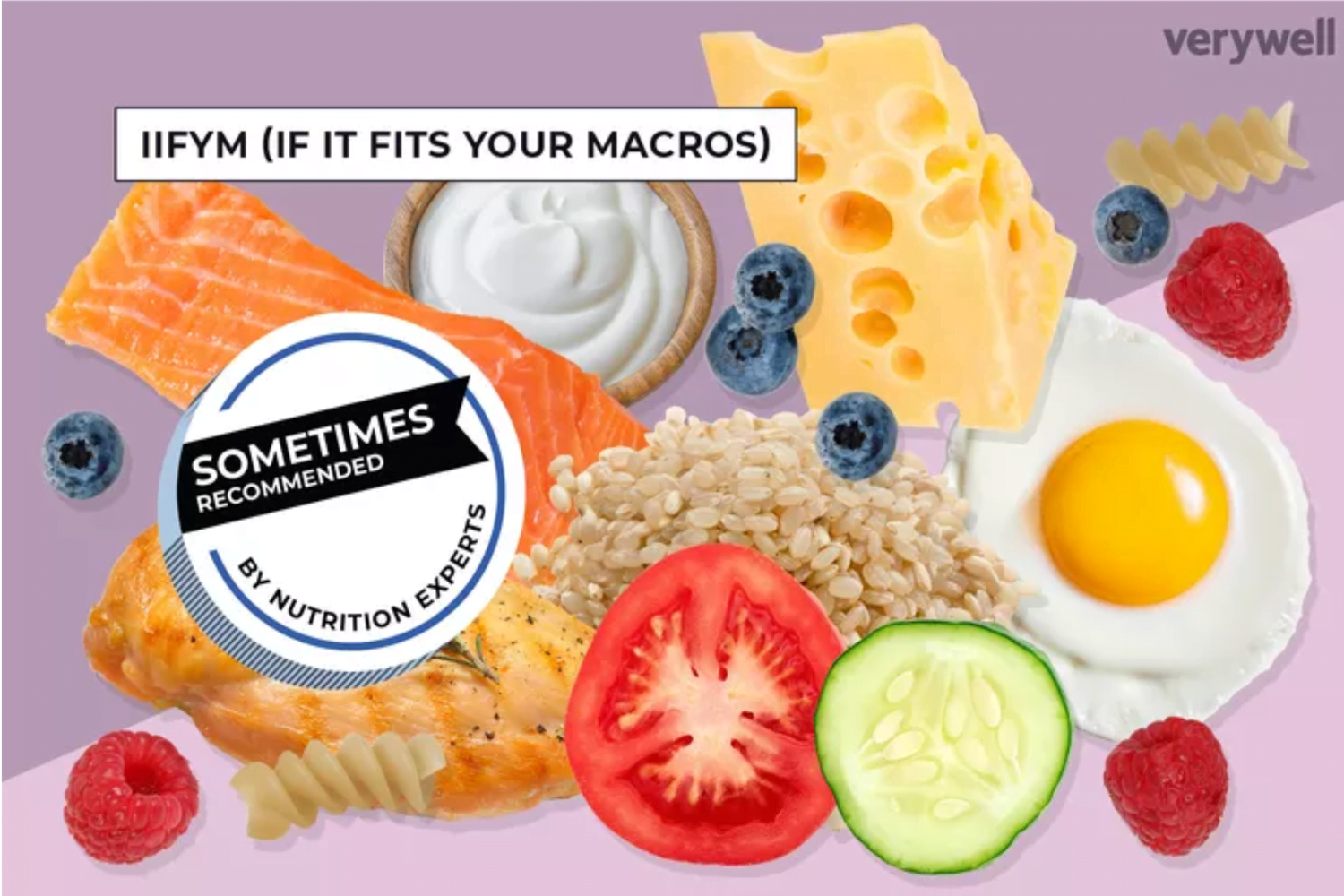Amanda Capritto, ACE-CPT, INHC Updated on March 23, 2021
At Verywell, we believe there is no one-size-fits-all approach to a healthy lifestyle. Successful eating plans need to be individualized and take the whole person into consideration. Prior to starting a new diet plan, consult with your healthcare provider or a registered dietitian, especially if you have an underlying health condition.
In the early 2010s, social media platforms exploded with fitness accounts run by bodybuilders, powerlifters, CrossFitters and other exercise enthusiasts. This was before the age of the influencer, but said fitness enthusiasts would share their workouts and meals online much like fitness and wellness influencers do today.
One popular style of eating, as evidenced by a quick hashtag search on Instagram, was IIFYM, which stands for “If It Fits Your Macros.” Still popular today, the IIFYM hashtag spits back images of incredibly toned and muscular people enjoying chocolate cake, double cheeseburgers and other yummy high-calorie foods.
In simple terms, IIFYM is a dieting theory that stipulates that food type isn’t the most important factor. Instead, the individual macronutrient is the most important factor. It kind of boils down to a “calories in, calories out” approach without much focus on food quality.
What Experts Say
THE IIFYM diet has its pros and cons. One pro is that it does not categorize foods as “good” and “bad” and includes adequate amounts of carbohydrates, protein, and fat, which makes no food groups off limits. If followers fill their macros with nutrient-dense food choices, such as: fruits, vegetables, whole grains, a variety of protein sources, and healthy fats, most of the time, the IIFYM can help people reach their health goals. However, if followers do not pay attention to food choices and only focus on hitting their macros, they may miss out on certain vitamins and minerals and even feel fatigued or sluggish. Logging food can be a great way to identify food behaviors and patterns. But, meticulous counting and measuring can take time to master and result in followers avoiding internal hunger cues. This diet is not suitable for those people with a history of disordered eating.
—Barbie Cervoni, MS, RD, CDCES, CDN
What Can You Eat?
Also called flexible dieting, a pro of the IIFYM lifestyle is that you can eat anything you want—as long as it fits your macros. “Macros” refers to macronutrients which include carbohydrates, fats and protein.1
Each macronutrient has a specific caloric value per gram:
- Carbs and proteins have 4 calories per gram
- Fats have 9 calories per gram2
By measuring the gram amount of each macronutrient you eat in a day, you should reach an intended daily calorie intake in line with your health and fitness goals.
Everyone has different macro “prescriptions” based on their biological sex, height, weight, activity level, body composition and goals.
IIFYM Diet Example
Take fictional John for example: John is six feet tall and weighs 200 pounds. He’s pretty active guy and eats about 2,500 calories per day to maintain his current level of fitness. He lifts weights and enjoys active hobbies, so he prioritizes protein and carbohydrate intake (but is mindful that because of his desk job, most of his day is spent sitting). At 35 years old, he wants to preserve muscle mass and stay lean.
Read the full article here.





